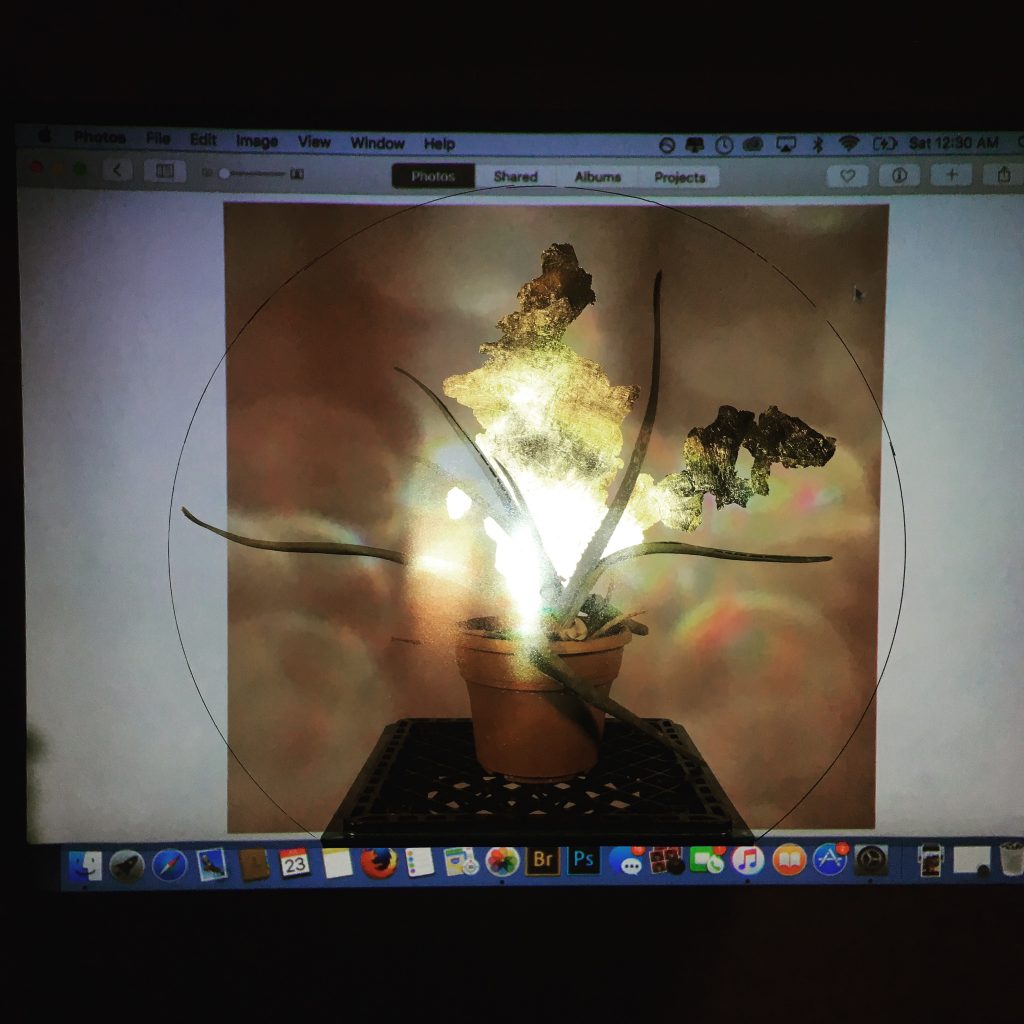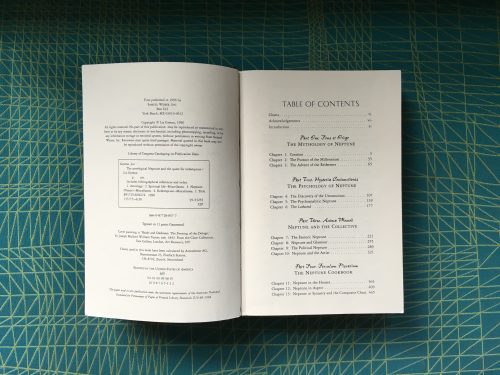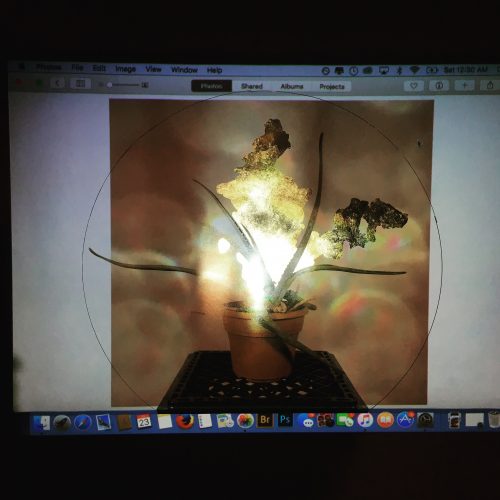
Neptune Square Saturn
I’ve been excited by the way my longstanding interests have synthesized and twisted together through photography. One such instance is the relationship that astrology has to the birth of science, and the ongoing relationship that popular culture has to both. I find that popular science edges closer and closer toward a full on bear hug with these previously pseudoscientific schools of thought. As such, I’ve been interested in the incorporation of astrological principles and concepts, modalities and symbols into bodies of work which are investigating relationships to transcendence and the divine in contemporary art.
Because I’m kind of a stuffy old fart, I like it when this has an homage to classical forms of representation, especially the forms and practices of early modernism. During this time, astrology, in particular, experienced a resurgence. The thinking of the Theosophical society had a disproportionately powerful impact on early Modernist writers, as did Eastern teachings coming to the West in part through the processes of English colonization of the world.

Liz Greene’s “The Astrological Neptune” and it’s Table of Contents. Can’t recommend this book enough for anyone tackling anything to do with spirituality or history.
However, I digress. I want to discuss Neptune and Saturn and flesh out some thoughts on their relevance to my own work. I am interested in the human relationship to the natural world, with special attention given to how we relate directly to land and to plants. This immediately focuses my work upon the historical concept of “The Garden”—the biblical Garden of Eden.
In doing research on Neptune, I have found that the planet itself is affiliated with the Garden of Eden as a mythical utopia. The concept of Redemption, saviors and ideals that don’t reflect what they are superimposed on are all indicative elements of Neptune. It is also deeply affiliated with the Numinous, with the presence of the divine and with the idea of subsumption into a divine love or universal oneness. Neptune is the dissolution of walls.
On the other hand, there is Saturn. The planet of limitations, hard work and restriction. Saturn is also the planet associated with crystallization, with the creation of structures that are difficult to change once edified. If Neptune is water, Saturn is the glass. If Neptune were the ocean, Saturn would be the wall we have built around it.

The sun. Taken with an iPhone 6.
As the planets move through the sky, they move in a circle around the sun. They appear to circle around the earth with periodic bouts of retrograde activity, where it appears that they move backwards—an optical effect because we are not at the center of the solar system but instead moving in tandem with it. As the planets circle they will end up making several important angles with one another, of which the conjunction (their apparent conjoining as seen from earth), opposition (where they are 180 degrees from each other) and square (whereupon they are 90 degrees to one another) are three key alignments.
At the moment we have two important events occurring: a retrograde Saturn, and a Neptune-Saturn square. The last two times this has happened in our relatively recent history was 1774-ish and 1860. This should ring some bells as dates immediately preceding both the American Revolution and the Civil War. Since last November of 2015, we not only have this angle, but will have three exact hits to this particular angle as Saturn goes retrograde over this square. So imagine a car going through a stop sign, then reversing backwards, and then going through the stop sign again. This is our Saturn, moving through this square with Neptune.
So what does this mean? Essentially, one could look at it like walls and waves. At each juncture of this, sides polarize enough to create a rift within an idealized whole. In many ways this rift existed beforehand, however in this moment the idea (Neptune) becomes physical (Saturn). In regards to my work, I am thinking alot about ways in which America was conceived by some as a kind of “Garden,” and that in many ways our population surges has left nothing wild anymore—everything is now seemingly subject to our actions and decisions.

Been gold leafing diffractions of the sun onto things which require it in order to grow, like plants.
As I said, my work thinks about the garden, but also about our relationship to the natural world. I have seen one of the roots of our current ecological and social catastrophe/dilemma as being deeply rooted in the modicums of domination and control inherent within the deep archetypal programming of Western society, with acute roots in the Roman empire and the ideologies of conquest. Just to clarify: This is not specific to Western civilization; however, the way in which this has represented itself in the West has become important in the way it represents itself in the world today.
[youtube]https://youtu.be/kGOrmgU134Q[/youtube]
To the Roman Empire, Athens was an important step in the development of civilization. It’s patron deity, Athena, was chosen over her brother Poseidon (which the Romans called Neptune). Poseidon/Neptune responded by flooding the city in a jealous rage. In my performances, I have decided to re-envision this myth and transposed a root of the Roman Empire as a site where Athena and her brother are actually in cahoots. In these performances Athena as Justice creates blueprints of the destruction of Rome and its development along principles which embrace a less controlling development aspect.
It is in the hegemonic interests of power to say that another world is not possible, that we must stick to reform of the current system and that civilization is the “natural” order, and furthermore that Western civilization as it exists right now is the pinnacle of this process. This would then also reify the social relationships which compose Western civilization as the same such pinnacle, and also reinforce the judicial systems which regulate these relationships.
But technology has provided us with greater and greater awareness of the fact that there is still an entire universe which we are unaware of. Even in our own ocean, we are finding new creatures all the time, such as the gigantic floating sheet-creature which shows up on a ROV camera next to an oil rig in the gulf of Mexico. I find the presence of these mysterious, seemingly impossible creatures comforting, an example of the fact that what we are handed is not “the” pinnacle but simply “a” pinnacle of one particular direction of development. So while Justice develops these blueprints, this video is projected in the background.

One of the cyanotypes from the performance.
In a second video as part of a performance at Art Basel Miami in 2015, I took these blueprints as Athena, to Poseidon, delivering them while also singing Bjork’s “Pluto”—an incorporation of the symbology of the planet of death, transformation and rebirth.
[youtube]https://youtu.be/RLgQ3iwHGs4[/youtube]
Cornell West says that justice is love in public. I love this idea, and have flipped the map of Rome around, so that on the cyanotypes the legend no longer reads “Roma” but reads “Amor,” an almost universally recognized romance-word for “love.” The world is currently being dissolved, as outdated and fractured structures are washed over by a flood which has been building for several thousand years now. Astrologically, everything improves after this but ultimately things must fall away in order for these new things to be created.
